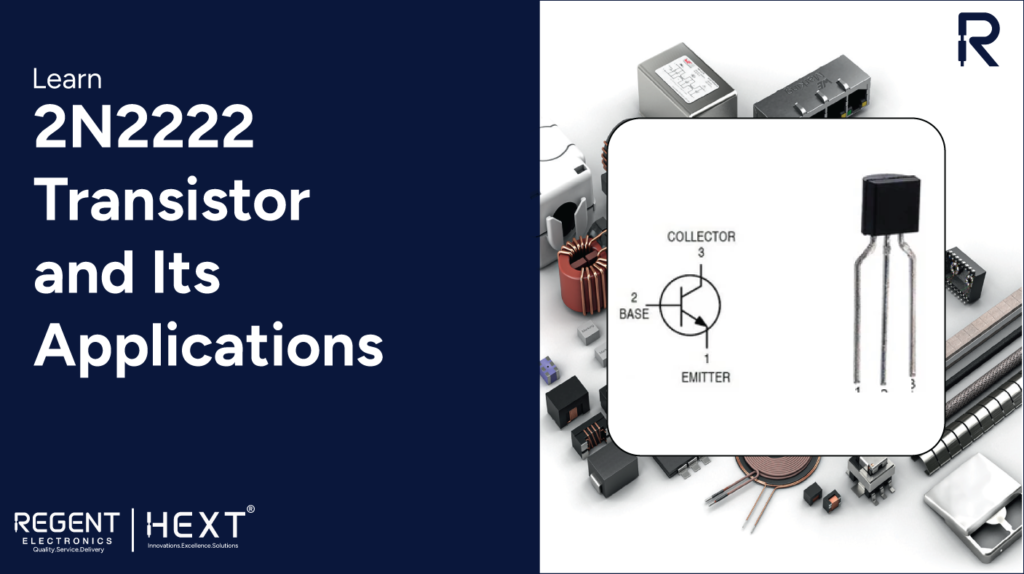
2N2222 Transistor: Applications, Features, and Circuit Insights
Are you curious about one of the most versatile transistors in electronics? The 2N2222 transistor, a widely-used NPN Bipolar Junction Transistor (BJT), is a staple for engineers and hobbyists alike. Renowned for its reliability and functionality, it is ideal for applications involving switching and signal amplification.
In this blog, we’ll explore the 2N2222 transistor in depth, covering its pinout, features, characteristics, specifications, and practical applications. Let’s dive in!
What is a 2N2222 Transistor?
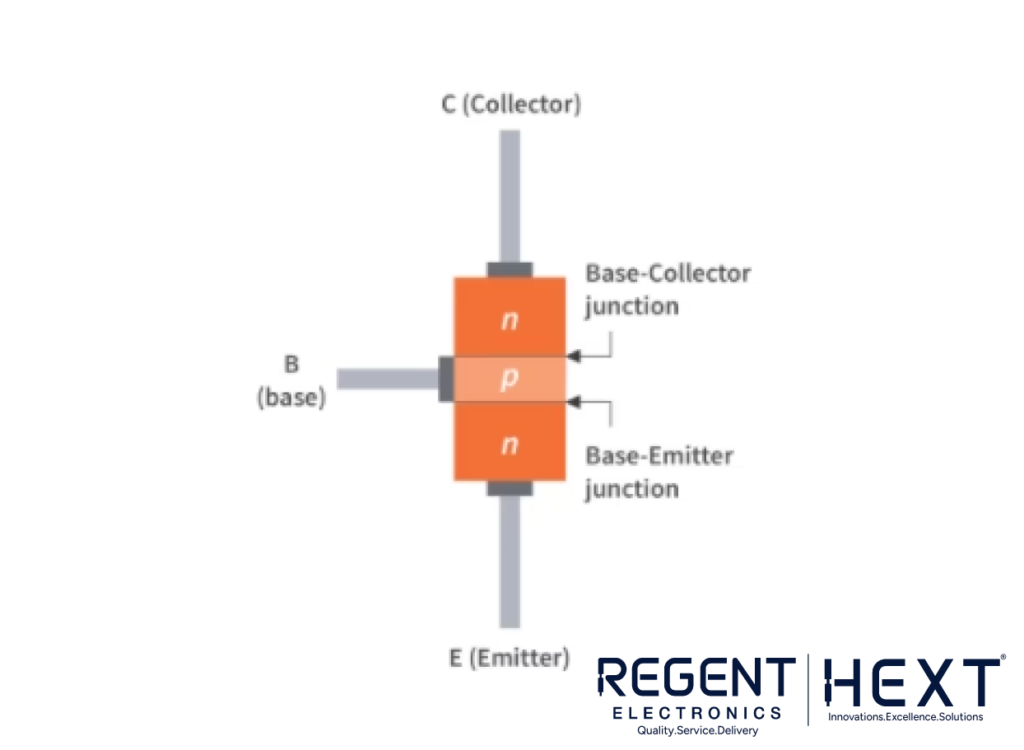
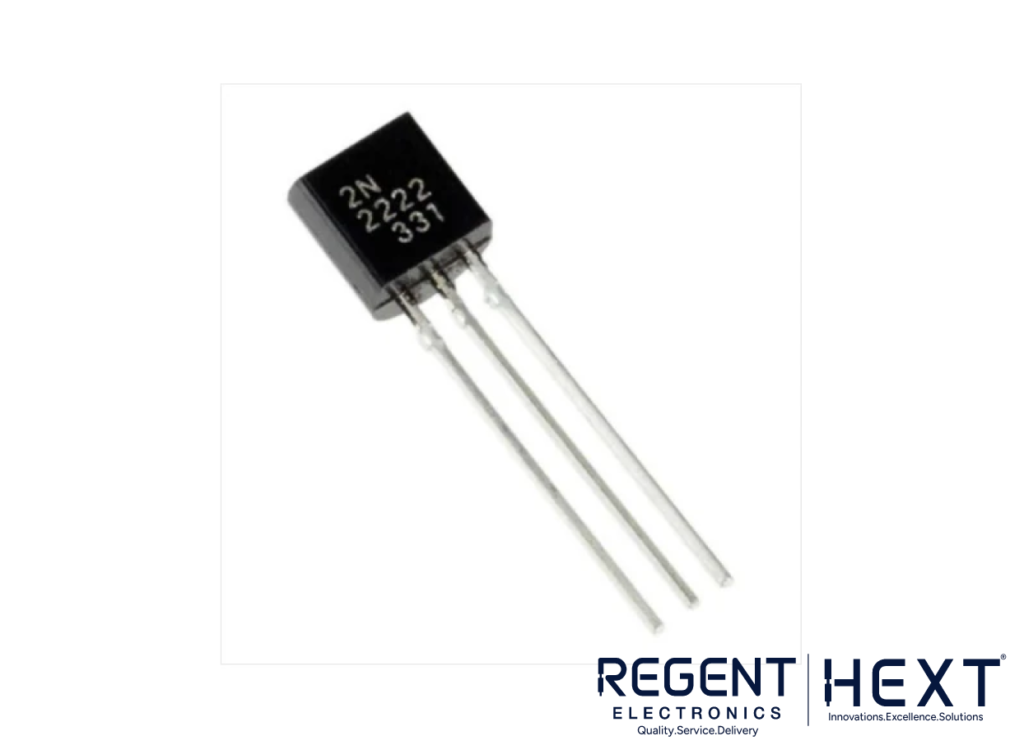
The 2N2222 is a popular NPN transistor enclosed in a TO-18 metal package, often crafted from silicon. It is designed for general-purpose switching and amplification tasks. The structure includes three terminals—Emitter, Base, and Collector—arranged to facilitate efficient current flow. This configuration allows the transistor to handle high currents of up to 800mA, making it stand out among similar small transistors.
The 2N2222 transistor operates by manipulating current through its Base terminal, enabling control of current flow between the Collector and Emitter. This capability makes it indispensable in a wide range of electronics projects.
Key Features of the 2N2222 Transistor
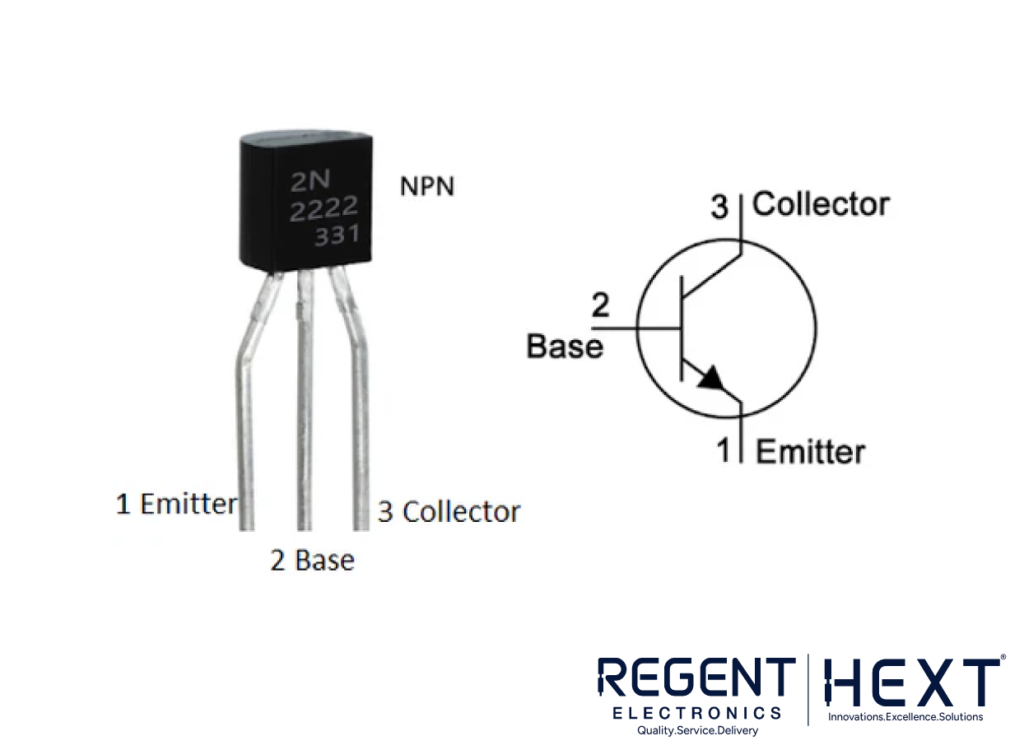
- Type: NPN Bipolar Junction Transistor
- Package: TO-18 or TO-92 (depending on variant)
- Collector Current (IC): Up to 800mA
- Voltage Ratings:
- Collector-Base Voltage (Vcb): 60V
- Collector-Emitter Voltage (Vce): 30V
- Emitter-Base Voltage (Veb): 5V
- Transition Frequency: 250MHz
- Power Dissipation: 652mW
- Response Time: Fast switching with rise and fall times in the range of nanoseconds
Pin Configuration
The 2N2222 transistor consists of three pins:
| Pin | Name | Description |
| 1 | Emitter | Current flows out through here |
| 2 | Base | Controls the transistor’s biasing |
| 3 | Collector | Current flows in through here |
Modes of Operation
The 2N2222 transistor can operate in three primary modes:
- Cutoff Mode:
Both the emitter-base and collector-base junctions are reverse biased, preventing current flow except for negligible leakage currents. The transistor acts as an open switch in this mode. - Active Mode:
The emitter-base junction is forward biased, and the collector-base junction is reverse biased. In this state, the transistor amplifies current, with the output proportional to the Base input current. - Saturation Mode:
Both junctions are forward biased, allowing maximum current flow with minimal resistance. This mode is ideal for switching applications, as the transistor functions like a closed switch.
Applications of the 2N2222 Transistor
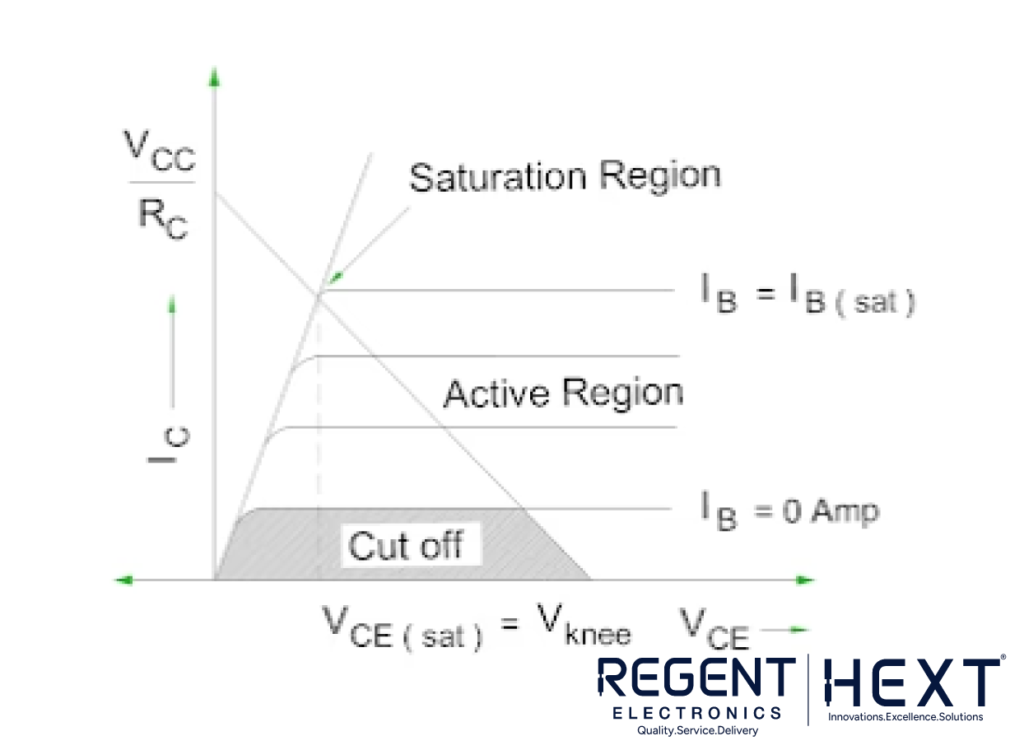
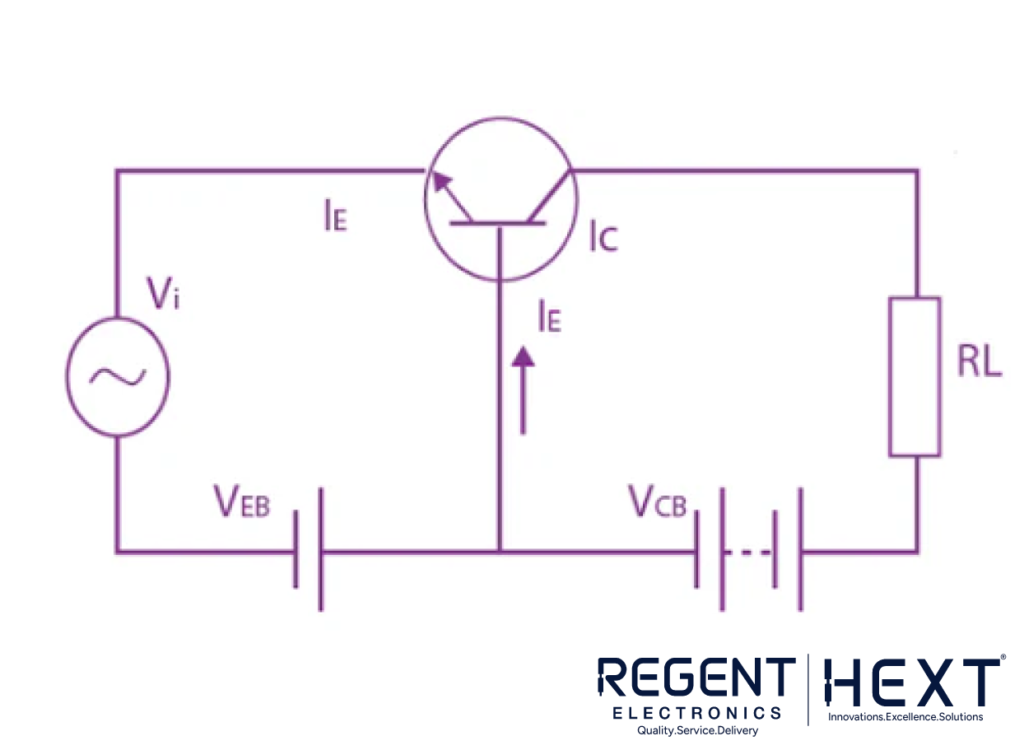
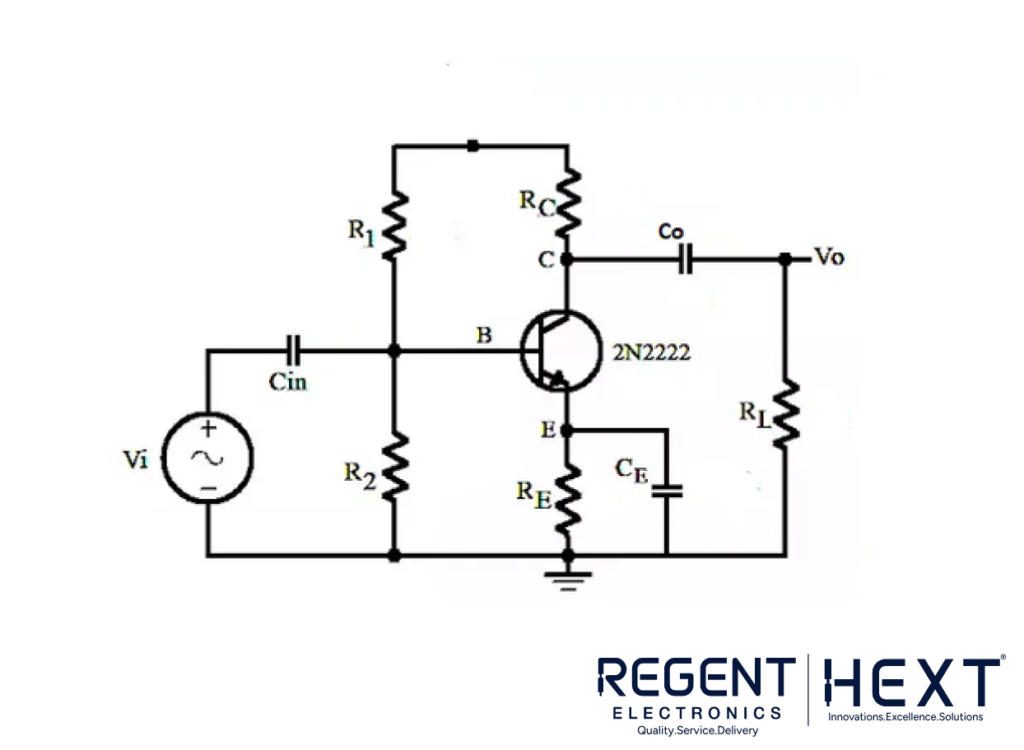
Thanks to its high current handling and fast switching capabilities, the 2N2222 transistor finds extensive use in various applications:
- Switching Circuits: Control of LEDs, relays, and other loads
- Signal Amplification: Audio, RF, and sensor circuits
- Pulse Width Modulation (PWM): Essential in embedded systems and automation projects
- Darlington Pair Configurations: Achieving higher current gain
- RF Circuits: For very high-frequency amplifications
- Embedded Systems: Widely used in automation
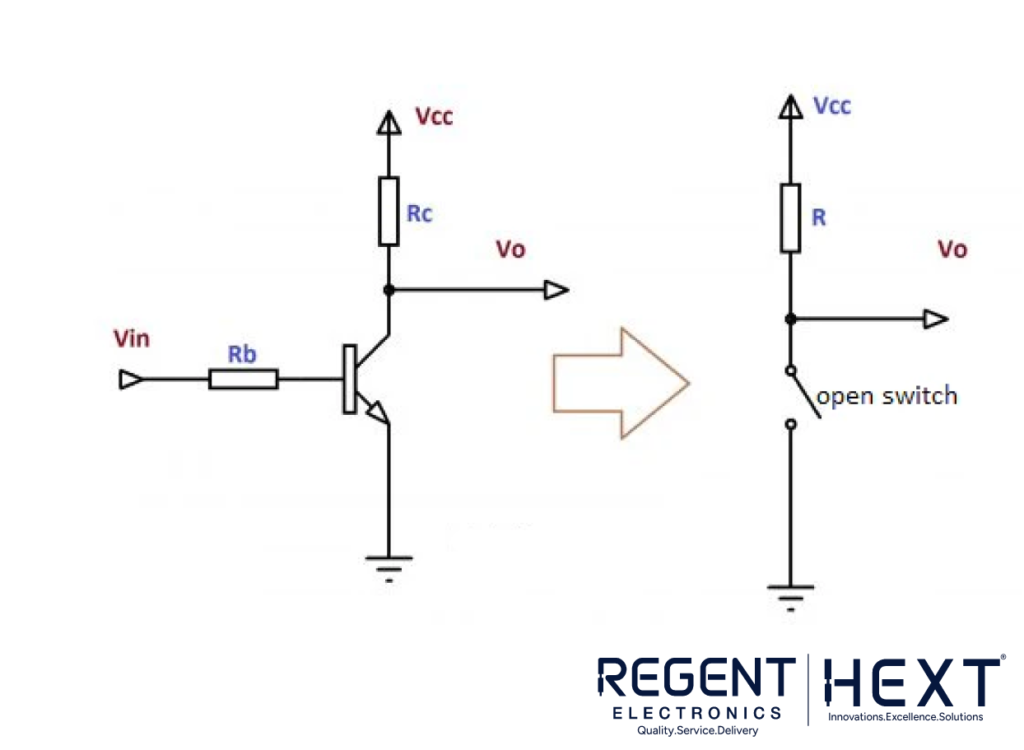
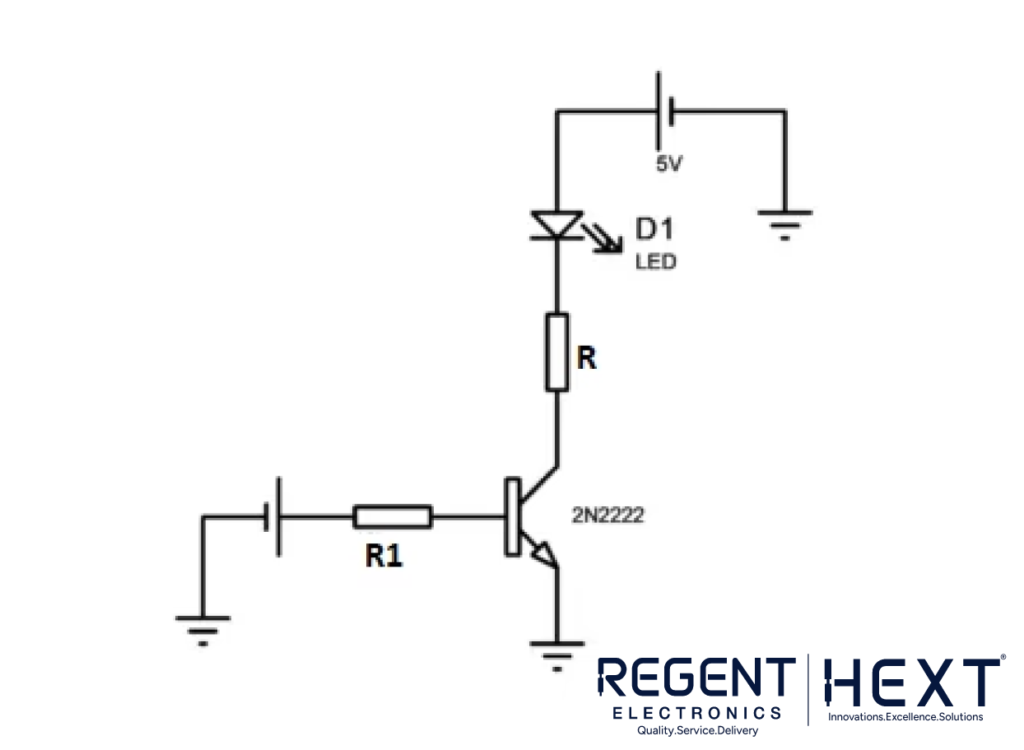
Using 2N2222 as a Switch
One of the primary applications of the 2N2222 transistor is as a switch. When a sufficient voltage (Vin > 0.7V) is applied to the Base, the transistor allows current to flow between the Collector and Emitter, acting as a closed switch. When no voltage is present at the Base, the transistor is in cutoff mode, behaving like an open switch.
Formulae for Switch Design:
- Collector Current (Ic) = Vcc / Rc (when Vce = 0)
- Base Current (Ib) = Ic / β
This property is frequently used to control devices like LEDs, where the Base resistor regulates the current flowing through the transistor.
Using 2N2222 as an Amplifier
As an amplifier, the 2N2222 transistor can boost weak signals. This is achieved by operating the transistor in active mode. The input signal, applied to the Base, is amplified and output through the Collector. Common applications include:
- Audio Amplifiers: Boosting voice signals
- RF Amplification: Enhancing radio frequencies
- Optical Fiber Communication: Improving signal strength
For best results, the common-emitter configuration is preferred due to its excellent gain properties.
Comparison: 2N2222 vs. 2N2222A
While the 2N2222 and 2N2222A share similar characteristics, key differences exist:
| Parameter | 2N2222 | 2N2222A |
| Package | TO-18 | TO-92 |
| Collector-Base Voltage | 60V | 75V |
| Collector-Emitter Voltage | 30V | 40V |
| Maximum Temperature | 150°C | 200°C |
| Transition Frequency | 250MHz | 300MHz |
Conclusion
The 2N2222 transistor is a versatile component that stands out for its high current handling, fast switching, and amplification capabilities. Whether you’re working on an audio amplifier, automation project, or RF circuit, the 2N2222 transistor is a reliable choice.
If you’re looking to purchase the 2N2222 transistor or similar components, explore Regent Electronics’ wide range of products for high-quality and affordable solutions.
